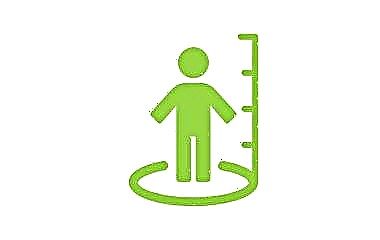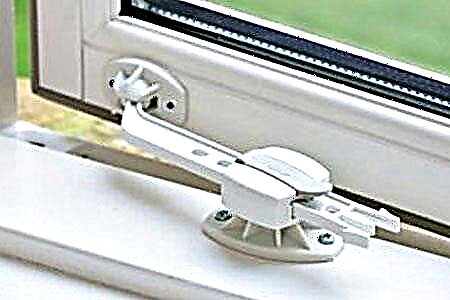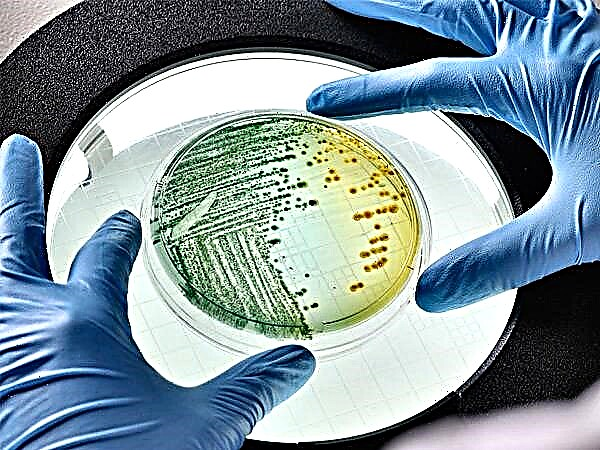A receding hairline on the back of a baby's head appears for various reasons. This can be a physiological norm or a pathological abnormality. Alopecia (the second name is baldness) occurs in varying degrees and character. Caring parents start sounding the alarm as soon as they notice a bald spot on the baby's head. It is worth understanding the causes of the symptom.

Baldness on the back of the baby's head
Interesting facts about the bald head of the child
Interesting Childhood Hair Loss Facts:
- In 70% of cases, baldness on the back of the head is physiological.
- Up to a year, hair rubs against the surface of the bed during sleep, this is normal.
- The amount of hair depends on the genetic factor.
- Children's hair is more fragile than that of adults, so it breaks off more often.
- The amount of shampoo does not affect the bald spot.
Reasons for the appearance of a receding hairline in babies
Parents of babies whose head hair is rubbed dream of getting rid of this problem. The causes of alopecia are physiological and pathological.
Bad genetics
The genetic factor plays a role in a baby's hairline. If mom and dad have thick, lush, beautiful hair, then the probability of alopecia in the baby is minimal. If one of the parents has a problem, the chance of bald spots on the child's head increases.
The genetic problem cannot be solved. This trait is sewn into DNA. You can try to stimulate hair growth with frequent haircuts, but this does not always help.
Lack of vitamins
The baby's nutrition is important for the development of the whole body, including hair. A newborn with mother's milk or formula receives a large amount of vitamins and minerals. Due to this, the follicles receive nutrition.
Sometimes breast milk doesn't have enough nutrients. This is due to the mother's inadequate nutrition during breastfeeding. Also, in the mother's body, milk production may be disrupted, it turns out to be insufficiently nutritious.
Important! If parents notice signs of baldness, first of all, you should pay attention to the nutrition of the crumbs.
Erase when turning head
Newborns and babies are encouraged to sleep on their sides. The head should be turned to the side. This is necessary so that the baby does not choke on vomit during unexpected regurgitation. After each night feeding, the baby is transferred to the other side.
By the second month of development, the child begins to roll over on his own. He does this slowly and often rubs his head on the blanket. Due to this, the hairs on the back of the head and temples are erased.

The baby is being combed
Hormonal adjustment
Hair loss is common in thyroid disorders. Hypothyroidism has this symptom. You can determine the disease by passing an analysis for hormones. This will require venous blood. Babies tolerate blood sampling rather painfully.
The disease can be congenital or acquired. The hormonal background does not depend on the type of food. The disease develops due to a lack or excess of iodine.
Telogen baby baldness
The hair on the baby's head falls out gradually, while there are no foci of alopecia. The density of the cover is disturbed. Bald spots increase in the area of the temple and the back of the head. Sometimes the disease is localized to the front of the head.
Hair shaft injury
A brittle hair shaft occurs with autoimmune diseases of a child. Hair just breaks off, cannot grow to normal length. In the child's body, specific antibodies are produced, which are aimed at destroying the hair follicles and shafts. The baby is given special treatment.
It also happens at the physiological level. Babies become bald due to the constant rubbing of the head on the surface of the crib. Bald spots appear mainly on the occipital and lateral parts of the head. Alopecia itself disappears with age.
Fungal and nerve damage to hair
Children often contract fungal infections. It is called trichophytosis. The incubation period lasts up to 7 days. Babies are infected by contact. For example, they used one comb with an infected baby or put on someone else's hat. On the scalp, lesions are observed, they have clear contours. Hair in this area breaks off at the base of the root and at a height of 3 cm.

The baby is held under the armpits
Ringworm
Lichen causes fungus. It affects not only the hair, but also the top layer of the skin. Infection occurs through contact with infected people and animals. It is transmitted by the contact method.
Hair begins to break off and fall out. At the site of the focus, a pink rounded focus is formed, which is covered with small leathery scales. It is required to immediately consult a doctor and undergo a course of treatment, as the baby may remain completely bald.
Alopecia areata
The second name of the disease is alopecia areata. It often occurs in children, usually diagnosed after 5 years. Until this age, doctors monitor the intensity and degree of hair growth. But this does not mean that there is no need to sound the alarm if the baby begins to go bald earlier. It is worth contacting a doctor in any case and discussing diagnostics and treatment methods with him.
The disease manifests itself smoothly. First, small bald spots appear on the occipital and temporal parts of the head. They gradually increase in size, begin to merge into one large focus. The hair becomes brittle and thicker at the root than at the ends.
Important! Almost 50% of child hair loss is alopecia areata.
Allergy
Atopic dermatitis occurs on the scalp. This reaction is typical for a new shampoo or a specific component. Large pink spots appear on the surface of the skin, they flake and itch. At the site of the lesion, hair begins to fall out, as the top layer of the skin is affected. Treatment is carried out with a course of antihistamines, and they also find out where the allergen is.
Rickets symptom
Hair loss is one of the signs of rickets. A bald spot on the back of the head is formed in a child. This is due to a lack of vitamin D. If the stage of the disease is initial, then when the balance of vitamins is restored, hair growth resumes.
If there is a suspicion of rickets, then it is advisable to seek medical help as soon as possible. In the later stages, the disease cannot be completely cured.

The baby is examined by a doctor
How to avoid baby hair loss
To prevent a receding hairline on the back of the baby's head, a few simple rules should be followed. Taking proper care of your baby's hair will help you avoid face-to-face baldness. Not all young parents know how to properly care for the baby's hair. Doctors deny such questions, they believe that it is not so important. Grandmothers and great-grandmothers give dubious advice.
All parents of a baby who are only a few months old see a bald patch on the back of the baby's head. This is a normal physiological phenomenon. Up to a year, Dr. Komarovsky recommends observing hair growth and taking proper care of them. Care rules:
- You can wash a newborn's head only with special baby shampoos.
- It is advisable to choose products with the most natural formulations.
- Ordinary soap dries out the skin very much; it is not used for hair.
- Shampoos are allowed to be used no more than once a week. On other days, the hairs are washed with plain water or herbal decoction.
- If the hair has grown long, then you can trim it so that it does not interfere with the child's eyes.
- In the first year of life, special children's brushes with soft ends are used for combing. They will prevent the hair shaft from breaking.
- If your hair is not very long, then it is better not to use elastic bands and hairpins. They contribute to the breaking of the rod.
- If there is a bald spot on the back of the baby's head, then closer to the year all the hair is cut to one level.
Important! Many parents shave their baby's head several times a year to strengthen their hair. This procedure will not help prevent baldness, but it will strengthen the hair.
When the bald patch grows
Why babies hardly grow hair on the back of their heads is described above. Most often, the cause is of a physiological nature and is eliminated on its own. There is a sign that babies cannot cut their hair until 1 year old. In fact, you can - it will improve the structure of the hair.
If you do not do any haircuts for the baby, then closer to 1.5 years, the bald spot will grow on its own. If the reason lies in the disease, then after the course of treatment, hair growth will be restored.

Crumb on the tummy
Associated symptoms of concern
In addition to alopecia, many diseases are accompanied by this symptom. A receding hairline in babies is a sign of a lack of vitamin D. Parents are obliged to observe the baby and its development. This will help to establish a diagnosis faster and prescribe the correct treatment.
Excessive sweating
With hypothyroidism and rickets in a child, the work of the sebaceous glands increases. The kid wakes up wet, the bedding is damp with sweat. This is one of the main signs of endocrine disease. An analysis for the determination of thyroid hormones and vitamin D will tell about the presence of the disease. If hypothyroidism turns out to be chronic, then the child will have to take pills for life to balance hormone levels.
Increased anxiety
Constant crying and anxiety indicate the baby's discomfort. The baby shows his displeasure, refuses to sleep, constantly asks for pens. Hair begins to dry, bald patches form. The baby is most likely to have atopic dermatitis, as it causes severe itching. The child cannot scratch his head on his own, so he cries.
Shyness, flinching for no reason
In the initial stages of rickets at 3-4 months, the baby becomes shy. He shudders for no reason, screams, is afraid of new toys. Unreasonable fearfulness arises from the onset of neurological disorders with a lack of vitamin D.
Important! For the prevention of rickets, newborns are given cholecalciferol in liquid form, 1 drop a day.
Enlarged fontanelle
The second name for vitamin D is cholecalciferol. It is responsible for the formation of bone tissue in young children. After a year, it continues to support the growth and development of the child's body. Newborns are born with an ununited fontanelle. This is provided physiologically. Every month it decreases in size, by the year it is completely overgrown. Its increased size indicates that the child does not develop enough bone tissue. This occurs in the second stage of rickets.
Fossa in the sternum
In the region of the mediastinum, the ends of the ribs are articulated. In an adult, dense bone tissue forms at this place. Children with vitamin D deficiency develop a depression in this area. The bones are deformed, hardened. The ends of the ribs are bent, a depression is formed.

Fossa in the sternum
Teeth are cut in the wrong order
Incisors in infants begin to appear in a specific order. First, the anterior lower incisors are cut through, 2 or 4 at once, followed by the upper anterior and lateral. By one year, their number should be 20. Doctors believe that the wrong order in the eruption of milk teeth indicates rickets. If at the same time baldness is observed in the occiput, then it is worth passing several tests.
Thickening of the ribs
In medicine, this phenomenon is called "rickety rosary". The rib bones acquire an uncharacteristic shape, their contours thicken. The x-ray shows that all the bones fit tightly to each other, the appearance resembles a rosary. Outside, a depression forms on the sternum.
Sleep disturbance
With the development of rickets, the child does not sleep well. He jumps up at night, starts crying. He has convulsions. The kid does not understand what is happening. Refuses night feedings and cries frequently.
A child's bald patches on the back of the head are not always physiological. If the baby does not show excitement, eats well and is always in a good mood, then there is no reason to worry. The bald patch will overgrow on its own when the time comes. If the baldness is profuse, foci with peeling appear on the head, the baby behaves restlessly, does not sleep well at night, then it is better to consult a doctor. Self-medication in such cases is unacceptable.



